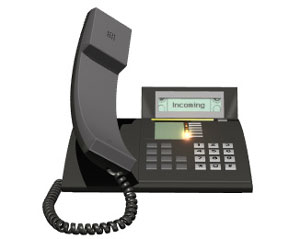There’s a broadband battle underway right now. It pits cable business broadband against Ethernet fiber optic bandwidth. These are the two leading technologies that will dominate business Internet now and for the foreseeable future. There is also a third contender warming up that we’ll discuss a bit later. Let’s see what the two big players have to offer.
 Fiber Takes Over From Copper
Fiber Takes Over From CopperThe first century of telecommunications was dominated by twisted pair copper wires that provided the last mile for landline telephones, multi-line business phones, point to point computer connections and, when it started developing, the nascent Internet. The ground is chock-full of multi-pair cables. Some will be pulled out and recycled. Others will be left to slowly disintegrate.
Their technological replacement is fiber optic cables. Glass fibers take the place of plastic coated copper strands. Optical fibers have tremendously more bandwidth carrying capacity. A copper T1 line can deliver 1.5 Mbps. A fiber can deliver a Gigabit per second up to at least 10 Gbps. It’s no longer uncommon to have 100 Gbps fiber optic service available for business use.
Fiber itself has undergone a technical evolution in protocol from the early SONET telecom standard to Carrier Ethernet, otherwise known as Ethernet over Fiber. This upgrade made sense as telecom traffic changed from largely audio phone calls to digital computer packets.
What Fiber Optic Service Can Provide
Fiber broadband is readily available and can offer 10 Mbps to 10 Gbps bandwidth. This bandwidth is usually symmetrical, meaning the same speed for upload and download. It is also generally dedicated. That means you don’t share your fiber capacity with any other businesses. It’s all your traffic from your building to where it joins the Internet. This makes for much more consistent Internet performance.
Many companies have been moving from having their own in-house data centers to hosting that equipment at a co-location facility or leasing the same capability from a cloud provider. If your business software is running remotely, it often makes sense to have a direct connection from your offices, factories and warehouses to the cloud provider and avoid any potential congestion from the Internet.
Direct connections are also useful between company facilities, such as branch offices and any owned data center facilities. Essentially, you are extending your LAN out to include all your locations.
How Can Cable Compete with Fiber?
Cable got its start as a community antenna that fed a small town or city. Like fiber, cable has come a long way technically. Analog has transformed into digital. Still, isn’t cable a bandwidth limited copper connection?
Less than you might think. The drop or final connection to your business is still the familiar coaxial copper cable. The innards of the system have long ago upgraded to fiber, just like the telecom industry. That means most of the distance travelled is over fiber optic cables, some with as many as 100 fibers. The TV and Internet signal is converted to drive a copper drop cable just before it reaches your building. This system is referred to as HFC or Hybrid Fiber Coax.
The other big advance in Cable broadband has been the upgrading of cable modems using the DOCSIS standard. Most modems are now DOCSIS 3.1 that has the ability to support downstream data speeds of up to 10 Gbps and upstream speeds of 1 Gbps.
DOCSIS 4.0 is in the process of being deployed. This equipment upgrade will support downstream speeds of 10 Gbps plus upstream speeds of 6 Gbps.
Clearly, today’s cable broadband is easily a match for all but the most demanding fiber speeds. One difference between Ethernet fiber and cable broadband is that cable is usually asymmetrical to match the typical usage of retail customers on the Internet. In other words, the demand for download speed is usually more than the demand for upload speed. Often download is 10 times as fast as upload.
Another difference is that cable broadband is a shared access service in the last mile. This means that some heavy users may impact the performance of other users from time to time. For consumers, this is usually not a problem. For a business that depends of steady high performance for employee productivity using cloud services, it could present an issue.
Why Pick One Service Over the Other?
For consumers and many smaller businesses, cost is tie-breaker. Cable business broadband is generally less costly than Ethernet over Fiber for similar bandwidths. However, if you need symmetrical bandwidth, dedicated Internet access, dedicated point to point connections, or a dedicated line to your cloud provider, fiber optic connections can be well worth the added monthly cost. It should also be mentioned that some Cable companies are now offering access to their internal fiber optic networks as a premium bandwidth service.
Wireless is the Next Competitor
There is a new entry to the broadband wars that is also worthy of consideration. That is fixed wireless broadband. Once a niche service over very small areas, fixed wireless is now being offered by the major cellular carriers. What has made this possible is the advancement to 4G LTE and 5G. Mobile phones with 300 Mbps or more Internet service are now common. By providing a high performance modem without the telephone features but including Wi-Fi or LAN connection, carriers can deliver high speed broadband over their wireless networks already in place. Advantages include very reasonable pricing and little or no construction cost. You pick up the modem at the cellular store or have it shipped to you and install it yourself right away. It’s also perfect for pop-up stores and construction sites that are only temporary locations.
Which is best for your business? Cable broadband? Ethernet over Fiber? Fixed Wireless? Get pricing and availability for each of these bandwidth options and then choose the right solution for you.



